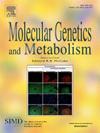Identification of genetic variants associated with Fabry nephropathy progression using whole-exome sequencing
IF 3.5
2区 生物学
Q2 ENDOCRINOLOGY & METABOLISM
引用次数: 0
Abstract
Fabry nephropathy, a common complication of Fabry disease (FD), presents with a heterogeneous clinical phenotype. To date, genetic biomarkers associated with the progression of Fabry nephropathy have not been thoroughly investigated. The aim of our study was therefore to identify genetic variants associated with nephropathy progression in FD.
A total of 300 Caucasian patients were enrolled and stratified into two groups based on their estimated glomerular filtration rate (eGFR). Whole-exome sequencing was performed, and variants in a curated panel of 190 genes related to podocyte homeostasis were subjected to bioinformatic analysis.
We identified six genetic variants with a false discovery rate (FDR) below 0.05. Five of these variants were located in non-coding regions: the 3′ untranslated region (UTR) (YRDC: rs7686, TPPP: rs28364690), the 5’ UTR (SNCA: rs1372518), an upstream region (COL4A2: rs7320419), and a non-coding exon (DLC1: rs10888175). Each of these variants was associated with an odds ratio less than one, suggesting a potential protective effect against nephropathy progression. In contrast, the coding variant rs749735949 in the FAT1 gene (FDR = 0.032) was associated with an odds ratio of 14.9, indicating a markedly increased risk of progressive nephropathy in carriers.
These findings suggest that rs749735949 in FAT1 may serve as a predictive biomarker for accelerated eGFR decline, and could support the identification of biological targets for the prevention and improved management of Fabry nephropathy.
使用全外显子组测序鉴定与法布里肾病进展相关的遗传变异
法布里肾病是法布里病(FD)的常见并发症,具有异质性的临床表型。迄今为止,与法布里肾病进展相关的遗传生物标志物尚未被彻底研究。因此,我们研究的目的是确定与FD肾病进展相关的遗传变异。共有300名高加索患者被纳入研究,并根据他们的肾小球滤过率(eGFR)分为两组。进行了全外显子组测序,并对与足细胞稳态相关的190个基因中的变异进行了生物信息学分析。我们发现了6个错误发现率(FDR)低于0.05的遗传变异。其中5个变异位于非编码区:3 ‘非翻译区(UTR) (YRDC: rs7686, TPPP: rs28364690), 5 ’ UTR (SNCA: rs1372518),上游区域(COL4A2: rs7320419)和非编码外显子(DLC1: rs10888175)。这些变异的比值比均小于1,提示对肾病进展具有潜在的保护作用。相比之下,FAT1基因的编码变异rs749735949 (FDR = 0.032)与14.9的优势比相关,表明携带者发生进行性肾病的风险显著增加。这些研究结果表明,FAT1中的rs749735949可能作为eGFR加速下降的预测性生物标志物,并可能支持识别预防和改善法布里肾病管理的生物学靶点。
本文章由计算机程序翻译,如有差异,请以英文原文为准。
求助全文
约1分钟内获得全文
求助全文
来源期刊

Molecular genetics and metabolism
生物-生化与分子生物学
CiteScore
5.90
自引率
7.90%
发文量
621
审稿时长
34 days
期刊介绍:
Molecular Genetics and Metabolism contributes to the understanding of the metabolic and molecular basis of disease. This peer reviewed journal publishes articles describing investigations that use the tools of biochemical genetics and molecular genetics for studies of normal and disease states in humans and animal models.
 求助内容:
求助内容: 应助结果提醒方式:
应助结果提醒方式:


